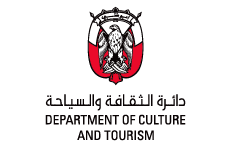Maqta Conservation Area – the historic gateway of Abu Dhabi
Maqta Conservation Area is a site comprised of buildings and structures from the Pre- and Post-oil and Transition periods of the United Arab Emirates. It forms a waterway between Abu Dhabi island and the mainland
Maqta Conservation Area is a testimony to the sequence of Abu Dhabi's development. It consists of a concentration of several significant buildings and structures including Maqta Fort, Maqta Bridge, the Environmental Research and Wildlife Development Agency (ERWDA) and Environment Agency Department (EAD) buildings and the Sheikh Zayed Bridge.
The strategic location of the site forms the island’s original gateway and the land connection point with other emirates. It therefore contributes to the political and symbolic significance of the capital of Abu Dhabi
The crossing
Fording the crossing was only possible at low tide. This natural protective barrier was one strategic reason for establishing Abu Dhabi island as the site of the new capital of the Al Bu Falah tribes, who previously lived in Liwa in the Al Dhafra Region for centuries.
In the early 1950s, a rough causeway was built to allow for easier access by car. In the late 1960s, Maqta Bridge was then constructed, leading to the removal of the causeway and the reopening of the natural flow of water, thereby restoring the natural habitat.
The Maqta Crossing continues to serve as a physical and symbolic gateway to Abu Dhabi island, with the addition of prominent elements such as the Maqta Causeway, Maqta Customs House and Sheikh Zayed Bridge.
Maqta Tower
One of the oldest buildings in Abu Dhabi, Maqta Tower is testament to the earliest days of settlement on Abu Dhabi island.
Built at the shallow low-tide crossing to Abu Dhabi island from the mainland, Maqta Tower is a significant historic building. Constructed in the late 18th century and contemporaneous with Qasr Al Hosn, it represents one of the few examples of coastal defensive towers built of coral stone and beach rock.
Until the 1950s, the tower signalled arrival to Abu Dhabi island for wayfarers. While travellers were still a long way from the town around Qasr Al Hosn and Bateen, which were on the far side of the island, Maqta Tower was a welcome rest stop on their way to the town.
With the construction of Maqta Bridge, Maqta Tower became obsolete, yet it remains a symbol of the historic importance of this area.
Maqta Customs House
In the 1960s, a police station was established on the mainland to monitor causeway traffic to and from the island. It was built of local gypsum mortar and sea and coral stone. It later became a Customs House, operating until 1971, when the founding of the United Arab Emirates meant that goods no longer needed to be checked at the border to Abu Dhabi island. The building is currently under rehabilitation and will be adapted into a museum.
Modern heritage
The ERWDA building was established in the early 1970s as a centre to support falconry activities. In 1996, the building was adapted to house the former ERWDA offices. The organisation aims to protect the natural environment, its wildlife and biodiversity.
The EAD Taxidermy Building was established in the late 1970s. It was part of a private department of Sheikh Zayed bin Sultan Al Nahyan and was built to display animals hunted during sporting excursions, as taxidermy artefacts.
The newest bridge to span the crossing between Abu Dhabi island and the mainland is the Sheikh Zayed Bridge. Designed by Pritzker Architectural Prize-winner Zaha Hadid, its road decks are suspended from symmetrical steel arches, forming a waveform with a fluid silhouette that evokes undulating sand dunes. The dramatic 842-metre long, 64-metre high Sheikh Zayed Bridge is said to be one of the most complex bridges ever built.







